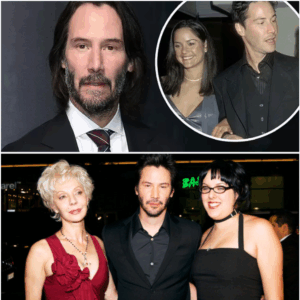The Other Lamb (2019), directed by Małgorzata Szumowska, is a chilling psychological horror film that delves into the unsettling world of a secluded, all-female cult led by the charismatic yet sinister Shepherd (Michiel Huisman). The story follows Selah (Raffey Cassidy), a young woman on the cusp of adulthood, as she begins to question the oppressive teachings and patriarchal control of the cult’s sole male leader. With its stark visuals, slow-burn tension, and themes of control, rebellion, and female empowerment, The Other Lamb has drawn comparisons to the iconic psychological horror thriller The Silence of the Lambs (1991), directed by Jonathan Demme. While both films explore psychological manipulation, power dynamics, and the vulnerability of their protagonists, they differ significantly in their narrative approach, thematic focus, and execution. This article examines The Other Lamb as a disturbing exploration of cult life and compares it to the classic The Silence of the Lambs, highlighting their shared elements and distinct differences.
A Disturbing Portrait of Cult Life in The Other Lamb
The Other Lamb immerses viewers in the isolated world of “The Flock,” a polygamist cult hidden in a remote forest, where women and girls live under the absolute authority of the Shepherd. The group is divided into “wives,” who wear red, and “daughters,” who wear blue, with Selah being one of the latter. The Shepherd, portrayed with a chilling blend of charm and menace by Michiel Huisman, styles himself as a messianic figure, controlling every aspect of the women’s lives, from their daily chores to their sexual roles. The film’s narrative centers on Selah’s coming-of-age journey, marked by her first menstruation and growing disillusionment with the Shepherd’s teachings, spurred by her interactions with Sarah (Denise Gough), a banished wife who reveals the cult’s dark truths.
Szumowska’s direction, paired with C.S. McMullen’s raw screenplay, creates a haunting atmosphere that blends psychological horror with surreal imagery. The film’s cinematography by Michał Englert is a standout, using vivid colors—teal blues, deep reds, and inky blacks—against the bleak Irish landscape to evoke a sense of isolation and dread. Selah’s nightmarish visions, including mutilated animals and blood-soaked scenes, underscore her psychological turmoil as she grapples with her faith and identity. The film’s pacing is deliberately slow, building tension through subtle shifts in Selah’s perspective, from blind devotion to rebellious awakening.
The cult’s dynamics are both literal and metaphorical, with the title referring to both the sheep the women tend and their own subjugation as “lambs” under the Shepherd’s control. The film critiques patriarchal oppression and religious control, portraying the Shepherd as a false prophet who exploits vulnerable women. Selah’s transformation from a loyal follower to a figure of resistance is the heart of the story, culminating in a violent, symbolic act of rebellion that sees the women reclaim their agency. However, the film’s ambiguity—leaving questions about the cult’s origins and beliefs unanswered—has been criticized for lacking depth, making it more a visual parable than a fully fleshed-out narrative.
The Silence of the Lambs: A Psychological Masterpiece
In contrast, The Silence of the Lambs is a tightly constructed psychological horror thriller that follows Clarice Starling (Jodie Foster), a young FBI trainee tasked with catching the serial killer “Buffalo Bill” (Ted Levine) by consulting the imprisoned cannibalistic psychiatrist Hannibal Lecter (Anthony Hopkins). Directed by Jonathan Demme and adapted from Thomas Harris’s novel, the film is a masterclass in suspense, blending horror, crime drama, and psychological depth. Its narrative is driven by Clarice’s intellectual and emotional battle with Lecter, whose manipulative charisma both aids and threatens her mission. The film’s iconic scenes, particularly the electrifying exchanges between Clarice and Lecter, are underpinned by Tak Fujimoto’s moody cinematography and Howard Shore’s ominous score.
The Silence of the Lambs explores themes of power, gender, and psychological manipulation, with Clarice navigating a male-dominated FBI world while confronting the horrors of Buffalo Bill’s crimes and Lecter’s mind games. Unlike The Other Lamb, which focuses on a closed-off cult, The Silence of the Lambs operates in a broader societal context, with Clarice’s vulnerability as a woman juxtaposed against her resilience and determination. The film’s horror stems from its graphic violence and psychological intensity, particularly in scenes depicting Buffalo Bill’s murders and Lecter’s chilling intellect. Its critical acclaim, including winning the “Big Five” Academy Awards (Best Picture, Director, Actor, Actress, and Adapted Screenplay), reflects its narrative precision and universal resonance.
Comparing Themes: Control and Manipulation
Both The Other Lamb and The Silence of the Lambs center on young women confronting manipulative male figures, but their approaches differ. In The Other Lamb, the Shepherd’s control is absolute, rooted in religious and patriarchal authority. He uses spiritual rhetoric to justify his abuse, portraying himself as a Christ-like figure while exploiting the women sexually and emotionally. Selah’s journey is one of awakening, as she realizes the Shepherd’s “grace” is a tool of oppression. The film’s horror lies in the psychological and physical subjugation of the women, with scenes of abuse—such as the Shepherd’s assault on Selah—presented with a disturbing realism that underscores the cult’s misogyny.
In The Silence of the Lambs, manipulation is more intellectual and reciprocal. Hannibal Lecter, while a dangerous psychopath, engages Clarice in a psychological chess game, offering insights into Buffalo Bill’s motives in exchange for personal details about her life. Unlike the Shepherd, Lecter is not a figure of outright patriarchal oppression but a complex antihero whose charisma and intellect make him both alluring and terrifying. Clarice’s strength lies in her ability to navigate this dynamic, using her vulnerability as a tool to extract information while maintaining her agency. The film’s horror is multifaceted, combining Lecter’s psychological menace with Buffalo Bill’s visceral violence, which contrasts with the more subdued, atmospheric dread of The Other Lamb.
Protagonists: Selah vs. Clarice
Selah and Clarice are compelling protagonists whose journeys highlight their respective films’ themes. Selah, born into the cult, starts as a naive devotee, her worldview shaped by the Shepherd’s teachings. Her rebellion is sparked by external influences, particularly Sarah, who reveals the cult’s lies, and her own bodily changes, which challenge the cult’s notions of “purity.” Raffey Cassidy’s performance captures Selah’s transformation from innocence to rage, with her expressive face conveying the internal conflict of a girl discovering her autonomy. However, the film’s lack of backstory for Selah and the cult limits the emotional weight of her arc, leaving some viewers wanting more depth.
Clarice, by contrast, is a fully realized character with a clear backstory—a working-class woman haunted by her childhood and driven to prove herself in the FBI. Jodie Foster’s nuanced performance portrays Clarice as both vulnerable and resolute, her interactions with Lecter revealing her strength and emotional depth. Unlike Selah, whose rebellion is a reaction to a singular oppressive system, Clarice operates in a broader societal framework, confronting not only Lecter and Buffalo Bill but also the sexism of her professional environment. Her arc is more satisfying due to the film’s tight narrative and clear resolution, as she ultimately triumphs over Buffalo Bill while grappling with the psychological scars of her encounters with Lecter.
Horror Elements: Psychological vs. Visceral
The horror in The Other Lamb is primarily psychological, rooted in the oppressive atmosphere of the cult and Selah’s growing awareness of its horrors. The film uses surreal imagery—slaughtered lambs, menstrual blood, and dreamlike sequences—to externalize Selah’s fears, creating a sense of unease rather than jump scares. Its violence, while minimal, is impactful, particularly in the climactic scene where the women turn on the Shepherd, with his body later found strung up with ram’s horns. This symbolic act of vengeance aligns with the film’s feminist themes but lacks the visceral intensity of traditional horror.
The Silence of the Lambs balances psychological and visceral horror. Lecter’s chilling dialogue and Buffalo Bill’s gruesome murders—particularly the skinning of victims—create a palpable sense of dread. The film’s tension peaks in the climactic night-vision sequence, where Clarice navigates Buffalo Bill’s lair, a masterfully crafted scene that locks viewers into her perspective. While The Other Lamb relies on atmosphere and suggestion, The Silence of the Lambs delivers both emotional depth and graphic horror, making it more universally accessible and impactful.
Cinematic Style and Reception
The Other Lamb is visually striking, with Szumowska’s arthouse sensibilities and Englert’s cinematography creating a haunting, painterly aesthetic. However, its slow pace and narrative ambiguity have divided critics, with some praising its atmosphere and others critiquing its lack of depth. On Rotten Tomatoes, it holds a 75% approval rating, lauded for its visuals and Cassidy’s performance but noted for its thin plot.
The Silence of the Lambs is a cinematic triumph, with Demme’s precise direction and the stellar performances of Foster and Hopkins earning universal acclaim. Its 95% Rotten Tomatoes score and status as a cultural touchstone reflect its ability to blend horror, thriller, and character study seamlessly. While The Other Lamb feels like an arthouse experiment, The Silence of the Lambs is a mainstream masterpiece with broader appeal.
Conclusion
The Other Lamb and The Silence of the Lambs both explore psychological horror through the lens of young women confronting manipulative male figures, but their approaches diverge significantly. The Other Lamb is a slow-burn, visually arresting parable about cult dynamics and female empowerment, with Selah’s rebellion against the Shepherd offering a feminist critique of patriarchal control. However, its ambiguity and lack of narrative depth limit its impact. The Silence of the Lambs, by contrast, is a tightly woven thriller that balances psychological depth with visceral horror, with Clarice’s journey providing a more satisfying resolution. While The Other Lamb excels in atmosphere and symbolism, The Silence of the Lambs remains a towering achievement in the genre, its influence enduring over three decades later. Both films, in their own ways, expose the dark corners of human control and resilience, making them compelling companion pieces for fans of psychological horror.




